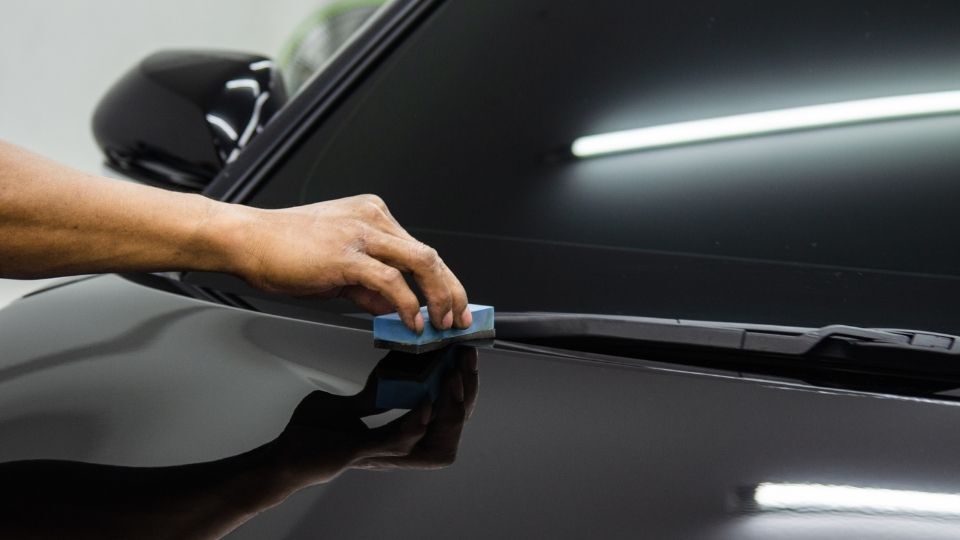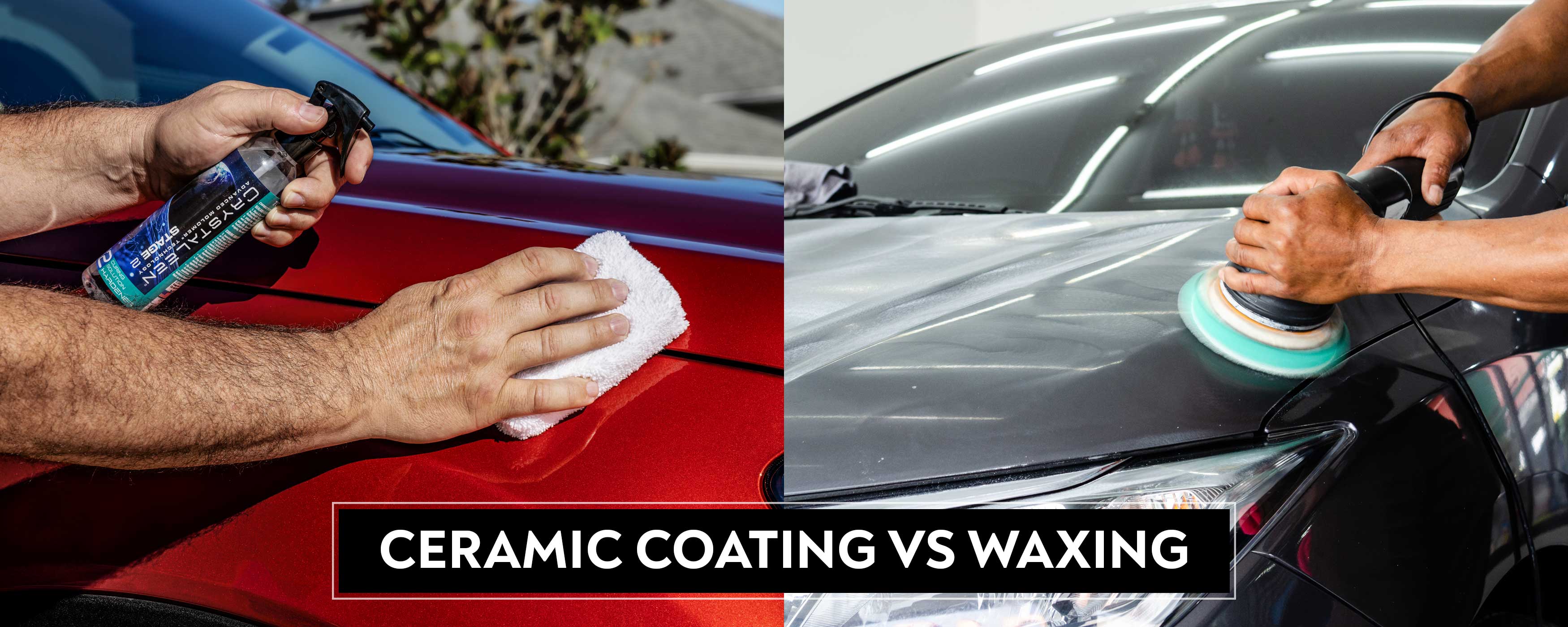Ceramic Covering vs. Typical Wax: Which Provides Better Long-Term Protection?
The argument between ceramic finishings and typical wax for car protection has amassed considerable focus among auto lovers and specialists alike. While both serve the purpose of securing paint, their differences in resilience, application, and long-lasting upkeep expenses may affect a customer's option. Ceramic coatings boast remarkable long life and resistance to ecological factors, yet the intricacy of their application increases inquiries regarding accessibility and functionality. As we check out these contrasting options, it becomes necessary to think about not just the immediate benefits yet additionally the implications for lorry care with time.
Introduction of Ceramic Finishing
Ceramic covering has acquired considerable appeal among automobile lovers and detailers alike as a result of its sophisticated safety qualities. This cutting-edge modern technology is created to create a sturdy, hydrophobic shield over an automobile's paint surface, dramatically improving its resistance to environmental contaminants such as dirt, UV rays, and chemical spots. Unlike typical wax, which gives a short-lived layer of protection, ceramic finishes bond at a molecular level with the paint, supplying long-lasting toughness-- commonly extending beyond two years with appropriate maintenance.
The application procedure involves thorough prep work of the automobile's surface area, consisting of cleaning and polishing to make sure optimal attachment. When used, the finish cures to create a robust layer that not just includes depth and gloss to the paint but likewise simplifies maintenance. With its hydrophobic residential or commercial properties, ceramic layer enables water and dirt to glide off even more easily, decreasing the regularity of washes and lessening the danger of swirl marks.
Additionally, ceramic coatings are readily available in various formulations, enabling customers to select items tailored to their specific requirements and preferences. Overall, ceramic finishing stands for a considerable innovation in paint protection modern technology, supplying exceptional performance compared to traditional alternatives.
Review of Standard Wax
Generally related to as a staple in vehicle care, wax offers as a prominent option for those seeking a straightforward technique to improve and shield their car's paint - ceramic coating. Automotive wax usually comprises all-natural ingredients, such as carnauba, or artificial substances, created to produce a safety layer on the surface of the paint. This layer not only improves the automobile's gloss and radiate but likewise gives a barrier versus ecological pollutants
The application of wax is generally user-friendly, making it accessible for both experts and DIY enthusiasts. Once applied, wax needs a treating period, after which it sets to form a safety covering.
Nonetheless, while wax works for boosting the aesthetic charm of a lorry, it is essential to keep in mind that the security it supplies may demand more regular reapplication compared to alternative items, such as ceramic coverings. Overall, standard wax stays a preferred choice for those focusing on convenience of usage and instant visual improvement.
Resilience and Longevity Contrast
While both ceramic finishings and standard wax offer protective advantages for auto paint, their durability and longevity differ dramatically. Standard wax, usually made from all-natural carnauba or synthetic polymers, usually supplies a safety layer that lasts roughly three to 6 months. This reasonably brief lifespan necessitates routine anchor reapplication to preserve ideal security.
On the other hand, ceramic coatings are engineered from innovative nanotechnology, creating a covalent bond with the paint surface area. This leads to a durable, hydrophobic layer that can sustain for 2 to five years, depending on the item and environmental problems. The remarkable toughness of ceramic finishings is credited to their chemical framework, which uses enhanced resistance to scrapes, UV rays, and oxidation.

Defense Versus Ecological Aspects
Securing a car's paint from ecological variables is vital for maintaining its look and worth over time. Vehicles are frequently revealed to a selection of aspects, consisting of UV rays, bird droppings, tree sap, acid rainfall, and road crud, all of which can endanger the honesty of the paintwork.
Ceramic finishes provide a durable protection against these ecological aggressors. Unlike conventional wax, which can deteriorate rapidly under UV exposure, ceramic layers form a resilient, hydrophobic layer that withstands the unsafe results of sunlight and environmental toxins. This sophisticated technology creates a chemical bond with the lorry's surface area, supplying superior protection that lasts for years, even in extreme problems.
Traditional wax, while less complicated to use, generally requires constant reapplication and offers minimal resistance to impurities and UV rays. Gradually, it can damage down, leaving the paint prone to scrapes and oxidation. In contrast, ceramic layers keep their safety top qualities much longer, considerably lowering the threat of paint damage and making certain that the car retains its visual appeal. Consequently, ceramic finishes are progressively recognized as the remarkable option for long-term protection versus ecological variables.
Application and Maintenance Differences
The methods of application and succeeding maintenance for ceramic coverings and standard wax vary considerably, influencing the overall user experience and performance of each product. Ceramic coatings need a more elaborate application procedure, generally entailing surface area preparation that includes washing, sanitizing, and brightening the automobile. Once the surface area is ready, the ceramic finishing is applied in a regulated atmosphere, commonly needing professional knowledge to make certain appropriate healing and bonding to the paint.

While both items enhance vehicle look, the longer-lasting protection provided by ceramic layers might justify their initial financial investment, in spite of the even more requiring application process. Conversely, traditional wax remains a prominent option for those seeking a less complex, albeit temporary, option.

Final Thought
In verdict, ceramic layers demonstrate significant benefits over standard wax in regards to resilience and environmental protection. With a life-span expanding two to five years and premium resistance to UV rays, dirt, and chemical stains, ceramic coatings use a more effective solution for lasting vehicle upkeep. Although the application process might require professional knowledge, the resulting cost savings and reduced regularity of reapplication emphasize read this article the worth of ceramic coatings for those seeking optimal lorry defense.
The discussion between ceramic coverings and standard wax for vehicle protection has garnered considerable interest amongst auto lovers and specialists alike. Unlike standard wax, which gives a temporary layer of security, ceramic finishings bond at a molecular level with the paint, offering long-lasting toughness-- usually prolonging beyond two years with appropriate upkeep.
While both ceramic layers and typical wax offer safety advantages for automobile paint, their resilience and longevity vary substantially. For auto lovers looking for long-lasting defense, ceramic finishes present an engaging benefit over standard wax items.
In final thought, ceramic finishings demonstrate substantial benefits over conventional wax in terms of toughness and ecological security.